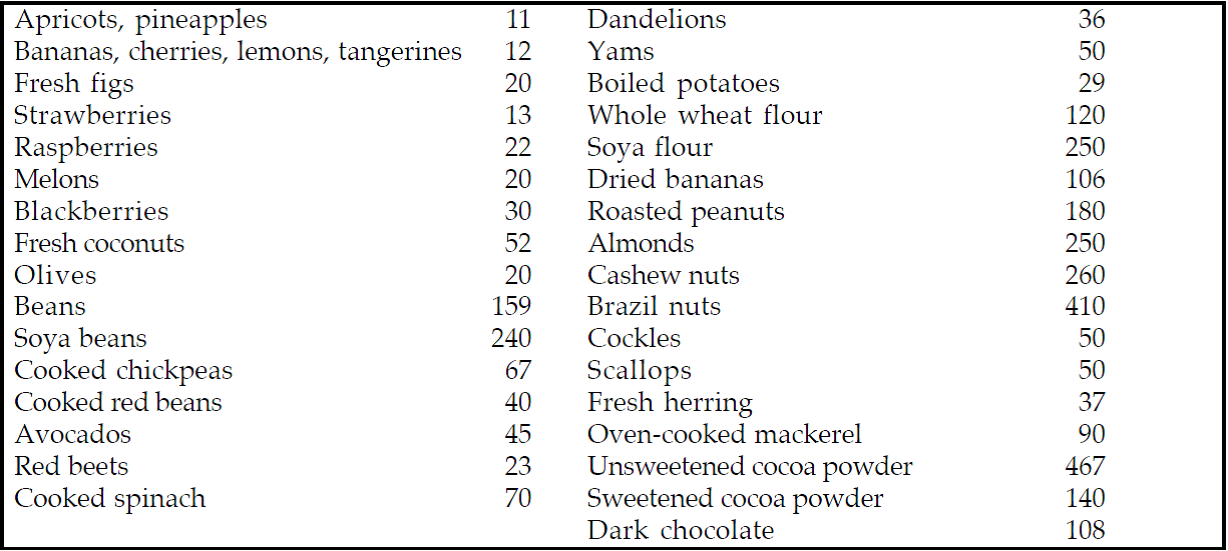Magnesium is an essential regulator of the body’s metabolism, mainly that of nerve cells. The body contains approximately 20 to 30 grams of magnesium. 50% of it is found in bones. Its metabolism is closely related to that of calcium and phosphorus in the bones. As for its presence in blood, magnesium is closely linked to iron. Magnesium is a mostly intracellular cation.
The Role of Magnesium
- contributes to the metabolism of carbohydrates, lipids and proteins (which can be assimilated by all the cells of the body)
- plays a defensive role: stimulates the destruction of microbes by the white cells (phagocytosis)
- its role is anti-anaphylactic, anti-allergenic, anti-inflammatory, anti-stress helps and maintains all systems in the body
- helps build the skeleton
- regulates the fibrous substance of nerves
- helps calcium fix itself
- co-factor in many enzyme reactions
- regulates the duplication of nucleic acids (which make up the chromosomes)
- is a major citrate in the regulation of the acid-base balance
Magnesium salts have a purgative and laxative action, and fight heartburn effectively.
Indications of deficiency
- trembling, muscular weakness
- tetany (muscle spasms, lock jaw), ataxia (lack of muscle coordination, hyperreflexia (involuntary muscle reflexes)
- psychological disorders
- heartbeat disorders, digestive disorders
- eye troubles, osteo-articular pains
- major skin dryness and/or itchiness
Sources
Magnesium-rich foods
CONTENTS IN mg/100
A large number of magnesium-based products are marketed under various names. It is important to remember that the metabolism of calcium is closely related to that of magnesium, phosphorus and potassium. Keep the following foods in mind: Brazil nuts, soya beans and unsweetened cocoa powder.
Low-magnesium foods
- Fruits, fresh fruit juices
- Milk
- Soft white cheese, yoghurts
- Beverages: beer, cider
- Oil
- Fresh fish (cooked without salt)
- Meat (cooked without salt)
- Jam (without salicylate)
- Pastries (without bicarbonate)
- Pasta (cooked without salt)
Daily Requirements
The daily magnesium requirement is approximately 6 mg/day per kg of body weight. An adult who weighs 60 kg needs 360 mg/day. Doses should be doubled with pregnant or breast-feeding women, and tripled with growing adolescents.
The action of magnesium is combined with those of many minerals, trace elements and vitamins, which is essential to the numerous mechanisms of the body.
BEWARE! According to one study, magnesium should be taken daily after the age of 40, because the body does not store it.
There are three types of deficiencies: a congenital inability to metabolize magnesium, an insufficient intake, malabsorption and excessive renal losses.
Cold weather increases the need for magnesium, and heat causes its loss through perspiration.

